Having ‘Wanderlust’? Hike into thin air to the top of the world in the Khumbu valley by doing the iconic Everest Base Camp Trek. Follow the footsteps of legendary mountaineers like Edmund Hillary and Tenzing Norgay and soak up eye-watering panoramas of Himalayan peaks and glacial valleys. But also on a cultural level there are many interesting things to see. Buddhist monasteries, stupa’s and stone carvings are never far away.
I did the trek this year in early spring 2017. The weather conditions were rough. I expected a gently spring weather and blooming rhododendrons, but snow storms made the trek more like an arctic expedition. Nevertheless I’m still thinking with great joy back to it. It’s such a magical feeling to get that close to the highest mountains of the world. The sublime landscape make you feel small and insignificant. And the simple, healthy trekking life – just walking, eating and sleaping – is just purifying.
In chronologic order: 8 reasons why hiking the EBC
- Flying to Lukla

Unless you choose to walk for a week, the journey begins with an unforgettable flight. One of the most thrilling moments in my life. Heavy turbulence make this tiny airplane shake wildly, while it’s flying near to deadly cliffs. Not to speak about the suicidal landing on Lukla Airport: one of the shortest and most dangerous landing strips of the world. In 2008 and 2012 domestic planes crash en route to Lukla. You’re completely handed over to the elements. And the – luckily excellent – skilled pilots. I truly believe they are the best in the world.
When you conquer your fear, and ignore the deplorable reputation of Nepalese domestic airlines, there is a lot to enjoy. The views are just stunning. The highest mountain scenery of the world passes by. At least, when you have a seat in the left row at the Kathmandu-Lukla flight or in the right row on the way back.

- Suspension Bridge between Jorsale and Namche Bazaar

Drooping suspension bridge between Jorsale and Namche
It’s an relatively easy and gentle stroll on the first day. Passing by pittoresque villages with prayer wheels, chortens and carved boulders. Also the second day starts easy meandering through pine forests and rhododendrons crossing now and then the lively dudh kosi river. After Jorsale the trail becomes more challenging as you have to ascent for about two hours. But this climb is definitely rewarding. The trail brings you to a mile-high, drooping suspension bridge, penduling hundreds of metres above the crowding Dudh Kosi. The gaping depth, the howling wind and swinging bridge make this river crossing a thrilling experience. Moreover, the friendly sight of the pine forests on the left and first views on imposing peaks in the distance on the right, make this spot an amazing viewpoint. Crossing the bridge is also entering the ‘real Himalayas’. After the bridge the scenery will be more coarse and alpine-like. And when you cross the bridge on the return way, you can let a sigh of relief. After the bridge the trek will be an easy stroll.

- Namche Bazar
After the agonizing, zigzagging ascent from the suspension bridge, the arrival in Namche Bazar comes as a relief. The altitude (3420 m) forces you to take a rest day. This is no punishment as this bustling trading village, with a spectacular view on the ridge of Kongde Ri (6187 m), offers some fascinating sights. The Namche Gompa has a tiny interesting museum. It houses an impressive statue of Guru Rinpoche and colourful mural painting. In the western lower side of Namche runs a stream through water-powered prayer wheel to a white stupa. A small and easy hike goes to the Sagarmatha National Park Visitor Centre where you can admire a stunning panorama of Himalayan Giants, among which the Everest.
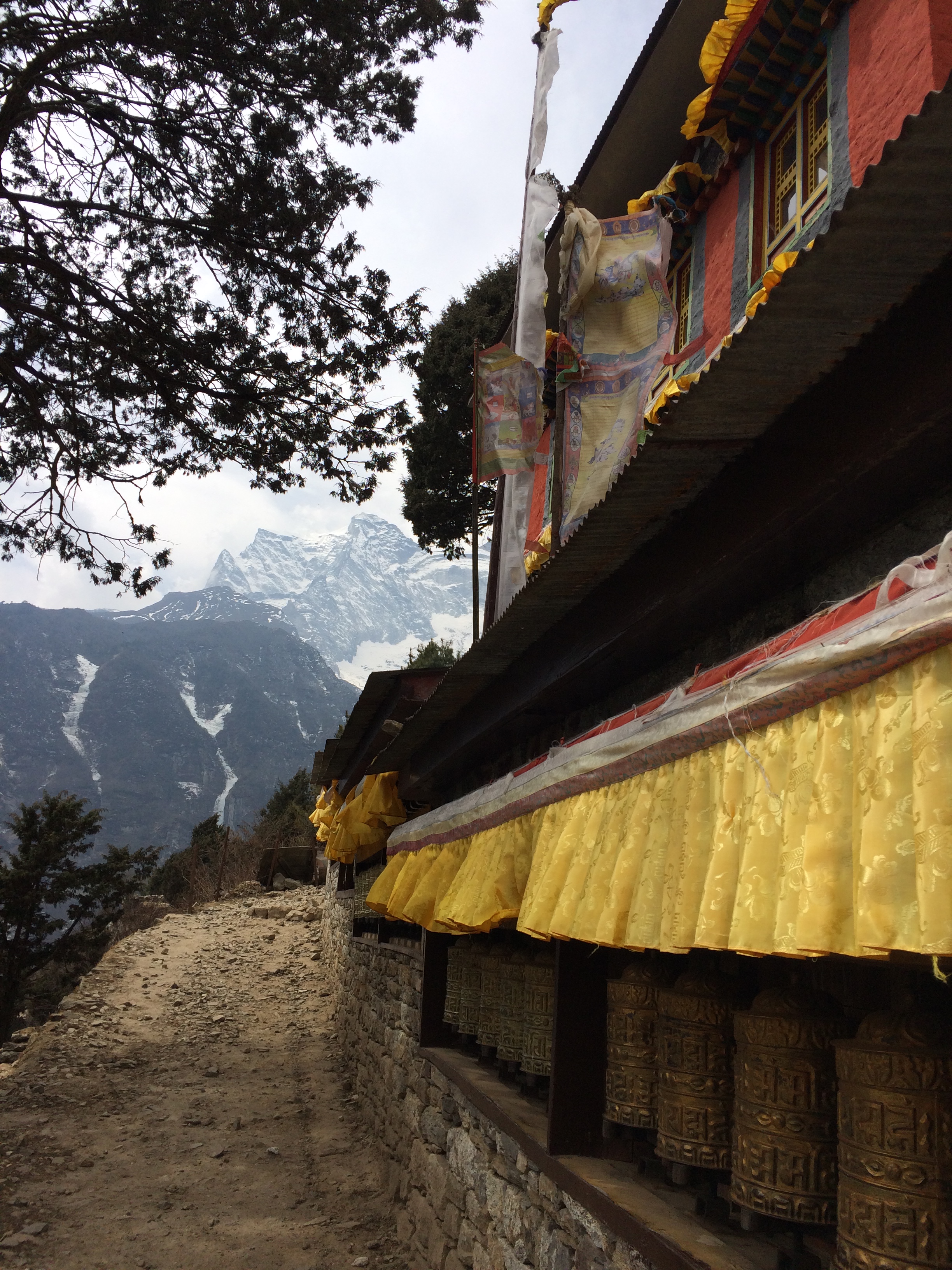
It’s nice to stroll in the with narrow, cobbled streets with pretty stone and timber buildings. Grabbing a freshly brewed latte macchiato, eating apple pie and use wi-fi are also comfortable ways to let the day go by. Especially because Namche is the last place before heading to the EBC where you can indulge yourself in some luxury. And on the return way it’s an excellent place for a pre-celebration of the end of the trek.
The oldest and most famous lodge is the Khumbu Lodge. It was former US president Jimmy Carter who stayed here in 1985. Rooms have great views, hot showers and even electric blankets.

- Tengboche Monastery
Tengboche (3870 m) is a pretty village surrounded by beautiful pine trees and rhododendrons that bloom in march and april. The village is dominated by the famous Tengboche Gompa, the largest monastery of the Khumbu valley. Founder of Tengboche Gompa was Lama Gulu. He gave order to build the structure in 1923, but the monastery was destroyed and rebuild twice. The current building dates from 1993, when it was rebuild after a fire that burned the structure to the ground. Sadly the monastery suffered damage from the 2015 earthquake and is currently restored. But you can visit the gompa and attend the daily ceremonies at 6 am and 3 pm. In october or november the courtyard of the gomba is the decor for the famous Mani Rimdu festival. Lamas and sherpas gather at the gomba for masked dances, plays, prayers, eating and drinking.
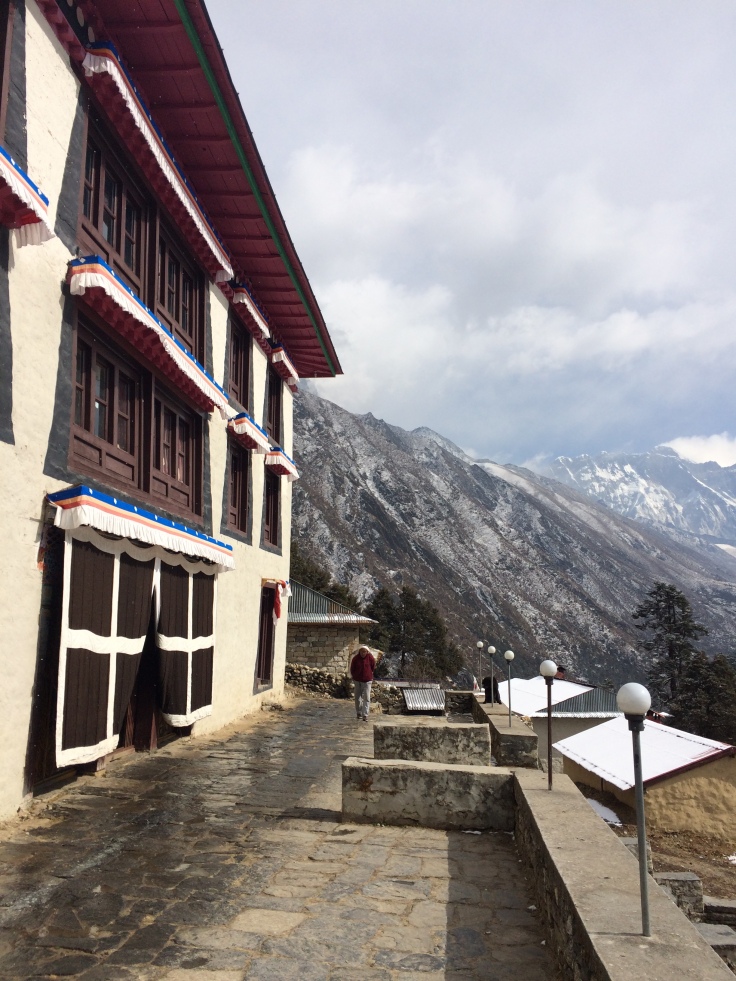
The monastery is a large structure with a main building, a large courtyard, several store rooms and lodges and a camping area. It’s constructed with stone masonry. The main hall has the ‘dokha’ or main prayer hall, where a large statue of Sakyamuni Buddha is deified, flanked by the bodhisattvas Vajrasattva (Dorje Sempa) and Manjushri (Jampelyan). Several everest expeditioners have visited the monastery for praying and seeking blessings for a save ascent.
Just a short walk down from Tengboche is Debuche, where you’ll find a small nunnery. Inside there are some fine old Buddhist paintings and murals.
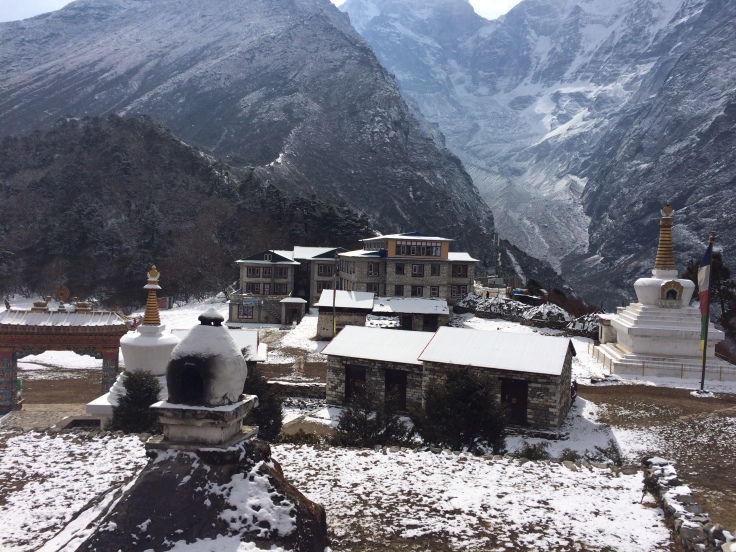
- Skull of the Yeti – Pangboche Monastery
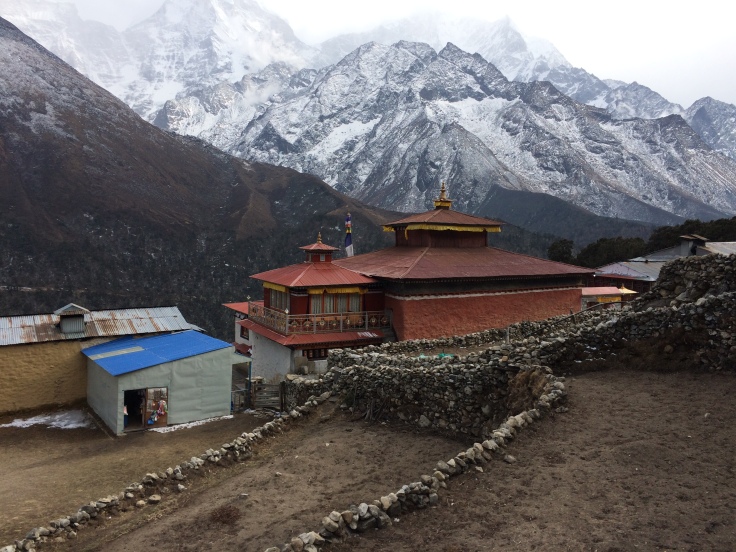
Although there are still tracks found of the Yeti, the supposed skull and a hand of this legendary figure can be admired in Pangboche Monastery. Well, actually it’s a replica. The ‘original’ relics were stolen in 1991. Nevertheless it’s worth strolling around upper Pangboche (3860 m) and visit the monastery, which is the oldest in the Khumbu valley. The gompa is founded by Lama Sange Dorje in the 17th century. Just above the monastery there is also a cute nunnery inhabited by friendly ladies (who gave me sweets). Not so far from there is also a small shrine for Guru Rinpoche.

- Dughla ‘Pass’
From Dughla (or ‘Tukla) the path climbs up on a moraine of the Khumbu Glacier. It’s a gentle workout to get to the top of the ridge. From there you’ll be rewarded with a splendid view on Mt. Pumoti 7165). Impressive are the memorials to lost climbers and sherpas.

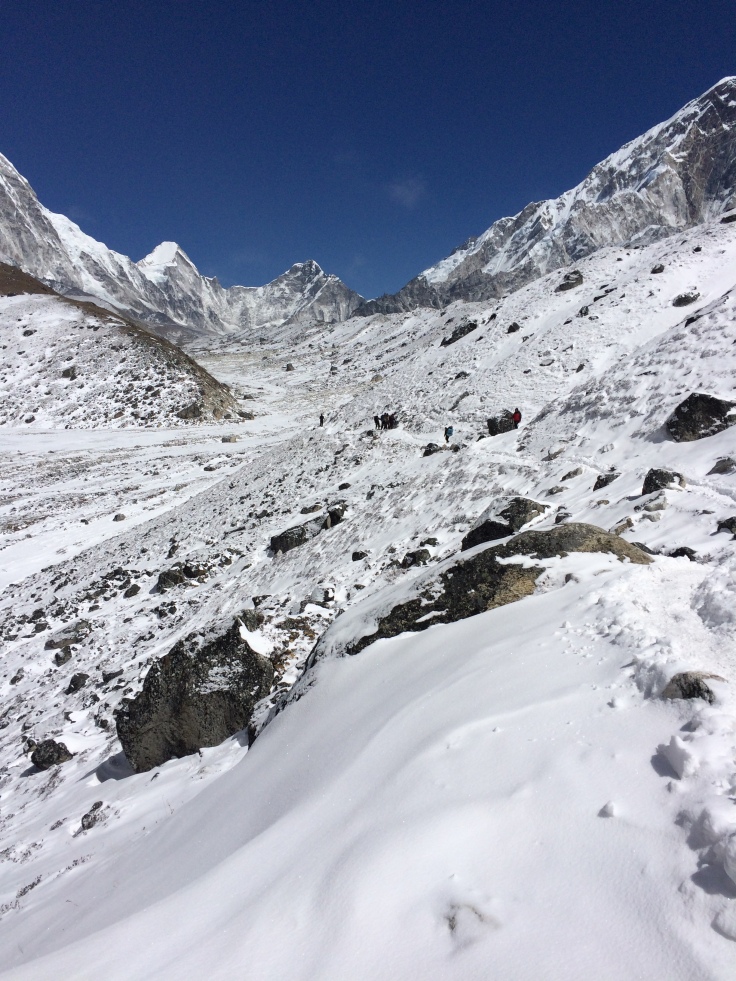
- Khumbu Glacier

With the altitude (around 5000) the part between Lobuche and Gorak Shep is no walk in the park. The good news is that the glacial landscape is just enchanting. The Khumbu Glacier ‘flows’ down at the slopes of the Mt. Everest. Due to the strong sunlight the ice moves fast (up to 1 metre a day) and breaks into towers – so called seracs – of ice. The result is a capricious surface.

- Kala Pattar
A steep and therefore challenging hike brings you to the top of this hill. From here you’ll enjoy the most breathtaking views on the Everest and the surrounding mountains: Pumori, Ama Dablam and Kantega. For me this was the highest (5643 m) and most challenging climb in my life. But the dazzling panorama was definitely worth it.

- Everest Base Camp
Several hikers skip the actual end goal of this trip. Altitude sickness and the prospect of seeing just a few tents make this final walk not so attractive. Personally I found visiting the base camp most rewarding. The walk is gorgeous and – despite of the last descending part on boulders – flat and not challenging at all.
Seeing just a few pieces of plastic isn’t very exciting, but it’s a special feeling to be on the base camp, where so many great mountaineers started their – sometimes – fatal climbing attempts. The idea that you are at the closest place you can get to the highest mountain in the world as a normal hiker is hard to describe. The sense of achievement is profound. Especially on this altitude (5364 m). Moreover the landscape is phenomenal. The peaks, the icefall, the snow…Just magnificent

(9.) Three Passes Trek
Now you’ve done the EBC there are two options. Either go the same way back to Lukla or, for the tough people (not me) – continue your trek. From the EBC head to Cho La, then go to the magnificent Gokyo lake and then via Renjo La and Thame back to Namche Bazaar. This is one of the most scenic treks in Nepal and only for the true adventures. When I did the EBC trek the Cho La pass was impossible due to snow storms.
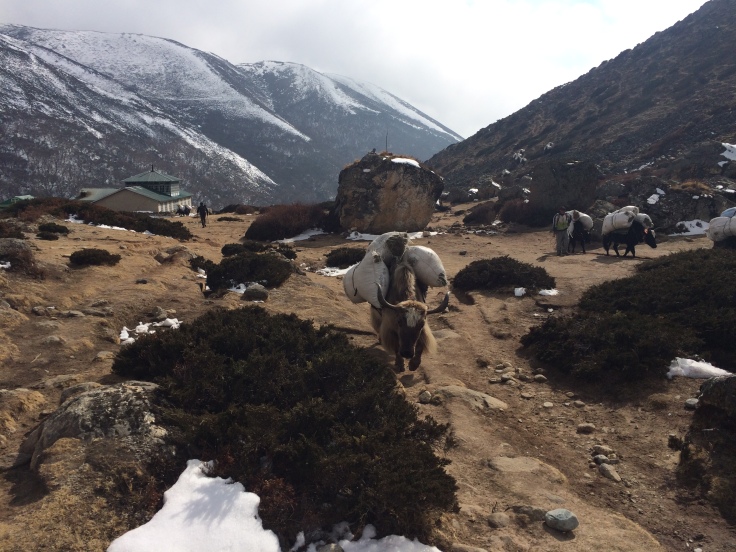
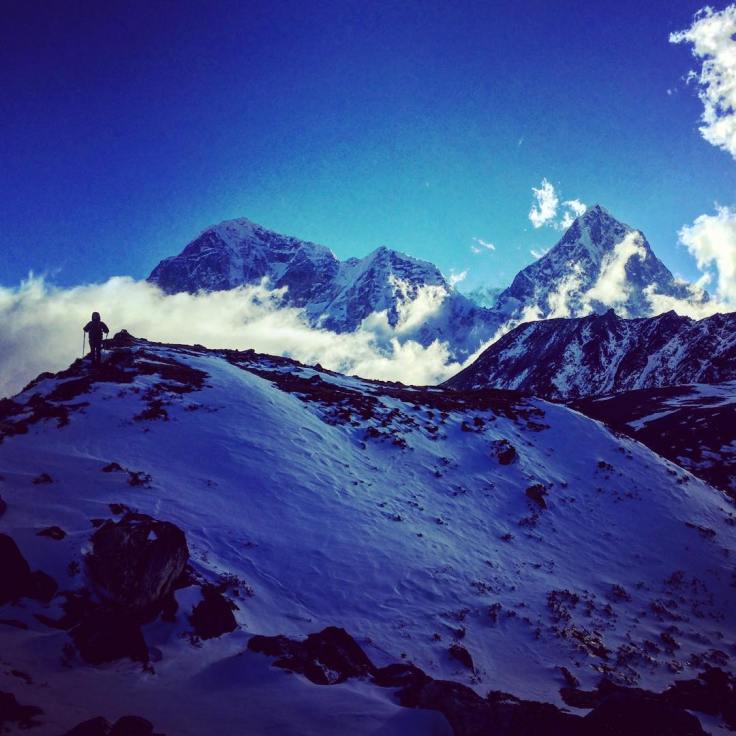
When to go?
October to December / March to May. Mind that there can be snowstorms in December and March.
What to bring?
- Altitude sickness supplies, like diamox pills. You can either bring altitude sickness pills from home or buy them in Nepalese stores. I think Namche Bazaar is one of the last villages where you can buy them. Although my doctor instructed me only to take the pills in case of altitude sickness, many experienced hikers (there are also doctors among them) take the pills preventive, without being sick. In their opinion it’s already to late when you’re suffering from acute altitude sickness, because it takes more than 24 hours before the diamox pills are working.
- Bring extra medicines. Paracetamol for headaches, ibuprofen for joint pain, strepsils for throat pain (many travellers get a cold). Not only for yourself but also for fellow hikers in need.
- Permits and photocopies of your passport and visa application. Buy your TIMS card in Pokhara or Kathmandu.
- A book (lightweight paperback) and a pack of playing cards for passing the long evenings in the lodges. Read Jon Krakauers ‘Into thin Air’ about the Everest disaster in 1996.
- Warm clothes, a down sleeping bag and a hot water bottle. In the night temperatures may drop below minus 15 celsius. A down jacket keeps you warm at night in the lodges. A hot water bottle in your sleeping bag can be a lifesaver.
Sleeping and eating
Lodges provide simple rooms and meals. Rooms cost basically nothing. Food is more expensive and very basic. The higher you get, the more simple and expensive the meals are. Dal bhat – rice, dal and vegetables – is absolutely the most nourishing and filling meal. Momo’s (dumplings) are also delicious and nutritious. Try the bizarre fried mars or snickers in dough for dessert. Daily one garlic soup is heartwarming and prevents altitude sickness. Although your fellow hikers may not want to walk in your shadow. 🙂
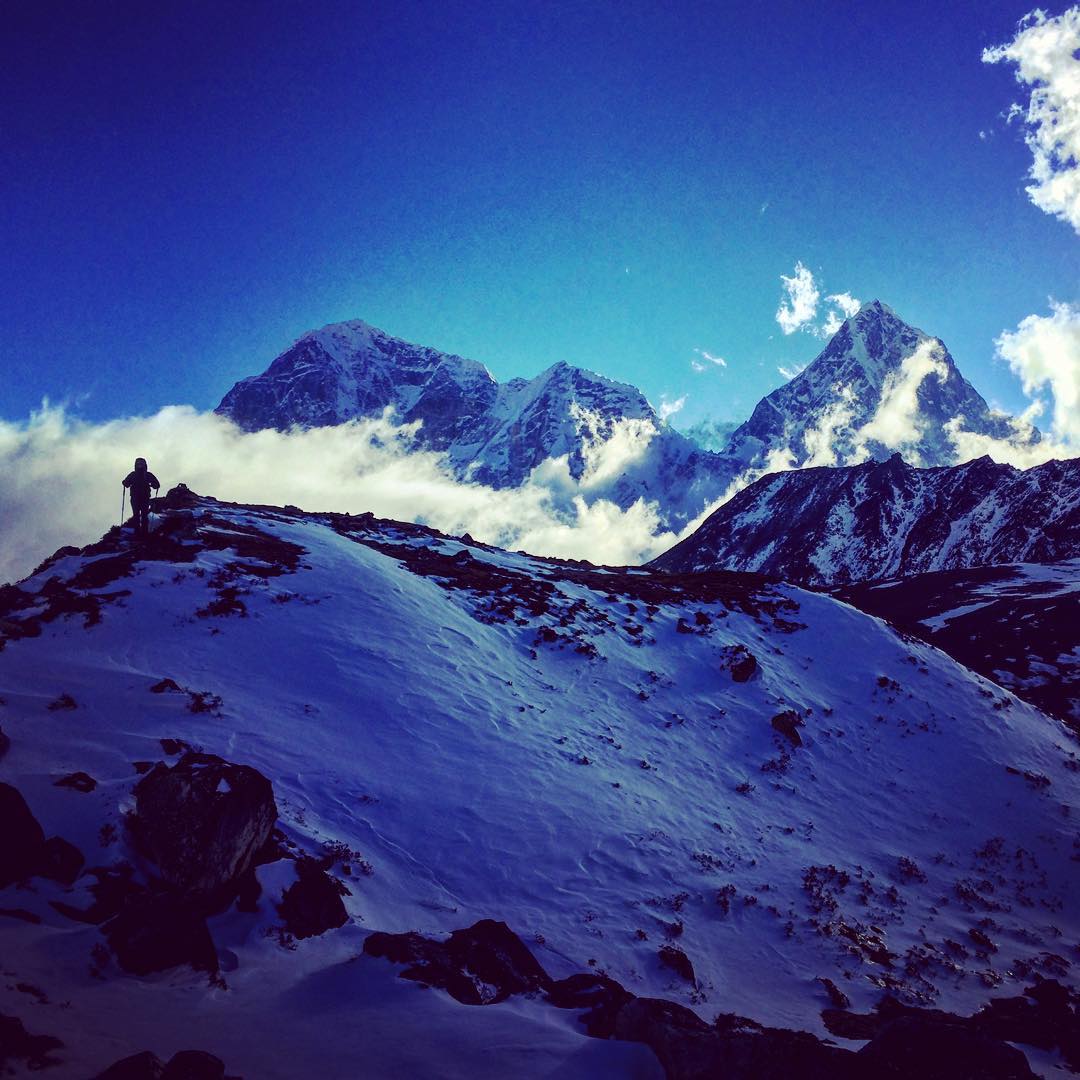
Beautiful place and pics too, hope you enjoyed 🙂
LikeLiked by 1 person
Thank you so much! Yes, I absolutely enjoyed te trek, it was wonderful!
LikeLiked by 1 person
These photos are breathtaking, what I would do to get a chance to go there.. 😀
LikeLiked by 1 person
Really appreciate your nice comment dear Kreso! I really hope you will, it’s a gorgeous trek.
LikeLiked by 1 person
What wonderful posts and pictures! WOW! How I would LOVE to travel to these places!
LikeLiked by 1 person
Thank you so much! Can really recommend this trek, it’s amazing!
LikeLike
fascinating place!
LikeLiked by 1 person
Thank you for your visit. I agree, It definitely is!
LikeLiked by 1 person